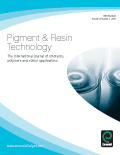
Pigment & Resin Technology
Scope & Guideline
Shaping the Future of Coatings with Innovative Insights
Introduction
Aims and Scopes
- Development of Functional Pigments and Dyes:
Research in this area explores new pigments and dyes, including their synthesis, properties, and applications in textiles, coatings, and other materials. This includes investigations into natural dyes and eco-friendly alternatives. - Innovative Resin Formulations and Coatings:
This encompasses studies on the formulation, characterization, and performance of various resin systems, including waterborne and UV-curable resins, highlighting their applications in protective coatings, adhesives, and composites. - Nanotechnology in Pigments and Coatings:
The journal frequently publishes studies on the use of nanomaterials to enhance the properties of pigments and coatings, focusing on aspects such as durability, antimicrobial properties, and environmental sustainability. - Environmental and Sustainable Practices:
A significant focus on eco-friendly practices, including the use of biodegradable materials, recycling processes, and the development of sustainable dyeing and coating methods. - Interdisciplinary Approaches to Material Science:
The journal promotes interdisciplinary research that combines chemistry, physics, and engineering to address complex problems related to pigments and resins, including their interactions with light and environmental factors.
Trending and Emerging
- Sustainable and Green Chemistry:
There is a notable increase in research focused on sustainable practices, including the development of eco-friendly pigments and resins, and the use of natural dyes derived from plant sources. - Advanced Coating Technologies:
Emerging technologies such as UV-curable coatings, smart coatings, and functional finishes that provide additional properties (e.g., self-cleaning, antimicrobial) are gaining popularity, indicating a shift towards high-performance materials. - Smart Materials and Responsive Systems:
Research on materials that can respond to environmental stimuli (e.g., temperature, pH) is trending, particularly in applications for textiles and coatings, showcasing the integration of smart technology into traditional material science. - Nanocomposites and Hybrid Materials:
The use of nanomaterials to enhance the performance of traditional pigments and resins is an emerging trend, focusing on improving mechanical, thermal, and barrier properties, as well as introducing new functionalities. - Integration of Digital Technologies in Production:
There is a growing trend toward using digital technologies, such as 3D printing and digital printing techniques, in the production and application of pigments and coatings, reflecting the industry's shift towards customization and efficiency.
Declining or Waning
- Traditional Synthetic Dyes:
Research on conventional synthetic dyes is becoming less frequent, possibly due to the growing emphasis on sustainable and eco-friendly alternatives, such as natural dyes and biodegradable options. - Non-Eco-Friendly Coating Methods:
There is a noticeable decrease in studies focused on traditional solvent-based coatings, as researchers increasingly turn to waterborne and low-VOC alternatives that align with environmental regulations. - Basic Color Theory and Colorimetry:
While foundational studies on color theory are important, there is a shift away from purely theoretical explorations towards more applied research focusing on practical applications and innovations. - Single-Use Pigments:
The focus on single-use pigments, especially in applications where sustainability is a concern, is declining in favor of multi-functional pigments that offer additional benefits such as antimicrobial properties or environmental benefits.
Similar Journals
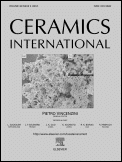
Ceramics International
Connecting researchers to the latest in ceramic technologies.Ceramics International is a premier journal published by ELSEVIER SCI LTD, focusing on advancing the field of materials science with a specific emphasis on ceramics and composites. With an impressive impact factor and a top-tier standing in several critical categories, including Q1 rankings in Ceramics and Composites, Electronic, Optical and Magnetic Materials, and Materials Chemistry, this journal serves as a crucial resource for researchers and professionals alike. Established in 1981, it has consistently showcased cutting-edge research in various domains, including surfaces, coatings, and process chemistry technologies, making it invaluable for those advancing theoretical and practical knowledge in these areas. While access is through subscription, the journal’s rich content, profound insights, and rigorous peer-review process ensure high-quality articles that contribute meaningfully to the scientific community. By fostering innovation and collaboration through rigorous research, Ceramics International stands out as an authoritative source for those dedicated to the evolution of materials science.

DYES AND PIGMENTS
Connecting Researchers to the Heart of Color Chemistry.Dyes and Pigments, published by Elsevier Science Ltd, stands as a pivotal journal in the field of chemical engineering, particularly focusing on the realms of dyes and pigments as materials with extensive application across industries. Since its inception in 1980, this journal has evolved to capture cutting-edge research until 2024, making significant contributions to both the Chemical Engineering and Process Chemistry and Technology domains, where it currently ranks in the Q2 category. With an impressive Scopus ranking placing it among the top 82nd percentile in General Chemical Engineering and the top 73rd percentile in Process Chemistry and Technology, it demonstrates a robust commitment to publishing high-quality, impactful research. Although it does not offer an open-access option, its comprehensive content remains accessible to a wide audience of researchers, professionals, and students who are deeply engaged in the study and development of new dye and pigment technologies. Engaging with this journal not only enriches knowledge but also facilitates critical discussions that drive future innovations in chemical material sciences.

Small Structures
Pioneering insights for a sustainable future.Small Structures, published by WILEY, is a pioneering open access journal launched in 2023, dedicated to advancing research and innovation across multidisciplinary fields including Environmental Science, Engineering, Materials Science, Chemistry, and Energy. With a commendable impact reflected in its Scopus rankings—holding the 5th position in Environmental Science and 6th in Engineering, among others—the journal facilitates the dissemination of high-quality, peer-reviewed research that drives scientific progress. It operates under an open access model, ensuring that vital insights and findings are freely accessible to researchers, professionals, and students alike, fostering collaboration and advancements in small-scale structures and their applications. Located in Hoboken, NJ, Small Structures not only aims to enrich the understanding of complexities within materials and their environmental impacts but also aspires to serve as a critical resource for the global scientific community.
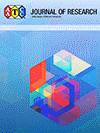
AATCC Journal of Research
Exploring groundbreaking advancements in materials chemistry.AATCC Journal of Research is an esteemed publication at the forefront of materials science, focusing on the latest advancements in the fields of materials chemistry, polymers and plastics, and process chemistry and technology. Published by SAGE Publications Inc. in the United States, the journal disseminates high-quality research that shapes the future of textile and materials innovation through rigorous peer-reviewed studies. With a notable impact factor indicative of its scholarly influence, AATCC Journal of Research stands out in the Q3 quartile rankings across its categories for 2023, making it a significant platform for emerging research and technological advancements. The journal's commitment to excellence is reflected in its extensive coverage from 2014 to 2024, and it is an essential resource for researchers, professionals, and students aiming to stay abreast of the latest trends and technologies in the materials science domain. While it operates under a traditional access model, the potential for pioneering knowledge exchange remains paramount, further solidifying its role in the academic and professional communities.
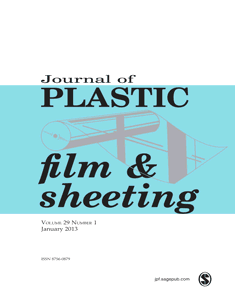
JOURNAL OF PLASTIC FILM & SHEETING
Empowering Researchers in Film and Sheeting AdvancementsJournal of Plastic Film & Sheeting, published by SAGE Publications Ltd, is a key periodical in the realms of materials science and polymer research. With its ISSN 8756-0879 and E-ISSN 1530-8014, this journal provides a platform for substantial advancements in the understanding and application of plastic films and sheeting technology. As of 2023, it has achieved a commendable impact factor and is ranked in the Q2 quartile across multiple categories including Materials Chemistry, Polymers and Plastics, and Surfaces, Coatings and Films. The journal's focus extends from fundamental research to practical developments, making it indispensable for researchers, professionals, and students engaged in these dynamic fields. With comprehensive coverage from 1985 to 2024, it remains an essential resource for those seeking to advance their knowledge and applications in plastic technology.

POLYMER SCIENCE SERIES B
Innovating Materials Chemistry for TomorrowPOLYMER SCIENCE SERIES B is a distinguished journal published by MAIK NAUKA/INTERPERIODICA/SPRINGER, dedicated to advancing knowledge in the fields of ceramics and composites, materials chemistry, and polymers and plastics. The journal, identifiable by its ISSN 1560-0904 and E-ISSN 1555-6123, spans a significant timeline from 1996 to 2024, reflecting its commitment to preserving and disseminating cutting-edge research in polymer science. With its current ranking in the Q3 category across relevant fields, it supports scholars and professionals in enhancing their understanding and application of polymeric materials. While it operates on a non-open access basis, the journal is pivotal for researchers seeking in-depth analysis and peer-reviewed studies. Located in the heart of the United States at 233 Spring St, New York, NY 10013-1578, POLYMER SCIENCE SERIES B serves as an essential resource for committed researchers, professionals, and students aiming to push the boundaries of polymer science.
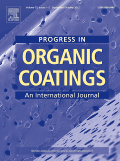
PROGRESS IN ORGANIC COATINGS
Exploring the Future of Coatings TechnologyProgress in Organic Coatings, published by Elsevier Science SA, is a premier peer-reviewed journal dedicated to advancing knowledge in the fields of chemical engineering, materials science, and organic chemistry. With a proud history dating back to 1972, this journal has consistently ranked in the top quartile (Q1) across multiple categories, including Chemical Engineering, Materials Chemistry, and Surfaces, Coatings and Films, highlighting its significance in the scientific community. As evidenced by its high Scopus rankings—placing it among the top ranks in organic chemistry, materials science, and coatings research—this journal serves as a critical resource for innovative research and technical developments related to organic coatings. Researchers, professionals, and students benefit from its insightful articles, which cover a broad spectrum of topics, enhancing their understanding of current trends and methodologies. While not offering open access, Progress in Organic Coatings remains an essential reference for anyone involved in the exploration and application of organic coatings technologies.

Surface Innovations
Pioneering Research in Process Chemistry and SurfacesSurface Innovations, an esteemed journal published by Emerald Group Publishing Ltd, serves as a crucial platform for researchers and professionals working within the fields of Materials Chemistry, Process Chemistry and Technology, and Surfaces, Coatings and Films. Launched in 2013, this journal has garnered attention for its commitment to advancing knowledge and innovation, holding a distinguished Q3 ranking in multiple categories as of 2023. With a focus on the latest methodologies and applications in surface science, Surface Innovations not only facilitates the dissemination of cutting-edge research but also encourages interdisciplinary collaboration among scientists and engineers. While not an open-access journal, it offers numerous options for accessibility to engage a wide array of audiences, making it a valuable resource for those looking to expand their understanding and expertise in this rapidly evolving field. The journal's consistent inclusion in high-ranking Scopus categories further underscores its academic impact and relevance.

GIANT
Fostering Global Collaboration in Cutting-edge Research.GIANT is a pioneering open-access journal published by Elsevier that has rapidly established itself as a cornerstone in the fields of Chemistry, Materials Chemistry, Polymers and Plastics, and Surfaces, Coatings and Films. Since its inception in 2020, GIANT has been committed to disseminating cutting-edge research and facilitating scholarly communication in these dynamic areas. With a remarkable Q1 ranking across multiple categories, the journal reflects an impressive impact factor within the academic community, evidenced by its standing in the top 82nd percentile in several Scopus classifications. Based in the Netherlands at Radarweg 29, Amsterdam, GIANT embraces a global audience through its open-access model, ensuring that groundbreaking discoveries are accessible to researchers, professionals, and students alike. Fostering innovation, the journal strives to shape the future of materials science and chemistry, making significant contributions in an era characterized by rapid scientific advancement.

SURFACE ENGINEERING AND APPLIED ELECTROCHEMISTRY
Advancing Knowledge in Industrial Surface TechnologiesSURFACE ENGINEERING AND APPLIED ELECTROCHEMISTRY, published by PLEIADES PUBLISHING INC, stands as a pivotal resource in the realms of engineering and materials science. With an ISSN of 1068-3755 and an E-ISSN of 1934-8002, this journal encompasses an extensive scope that includes industrial applications, and innovative surface treatments, fostering advancements in the fields of Industrial and Manufacturing Engineering, Surfaces, Coatings and Films, and Surfaces and Interfaces. Recognized for its contributions, it currently holds a Q3 classification in both Industrial and Manufacturing Engineering and Surfaces, Coatings and Films, alongside a Q4 ranking in Surfaces and Interfaces for the year 2023. Despite its competitive standings, the journal encourages inclusive dialogue and dissemination of research from a global community—making it an essential platform for researchers and professionals dedicated to surface technologies and applied electrochemistry. Potential contributors and readers can expect a comprehensive exploration of techniques and innovations, reinforcing the journal's commitment to bridging theory and practical application in these dynamic fields.